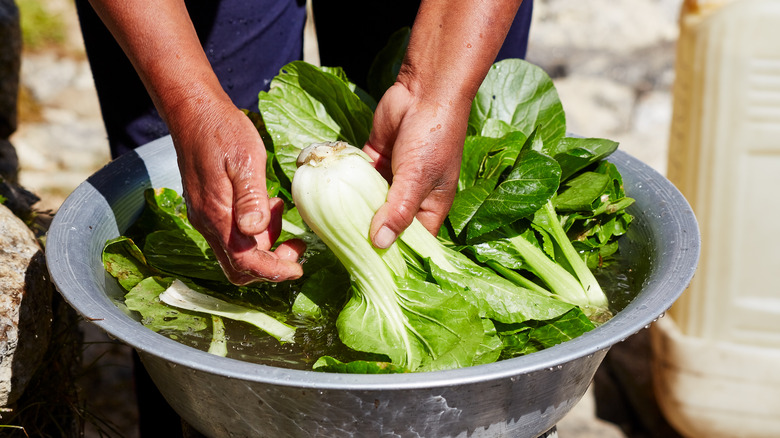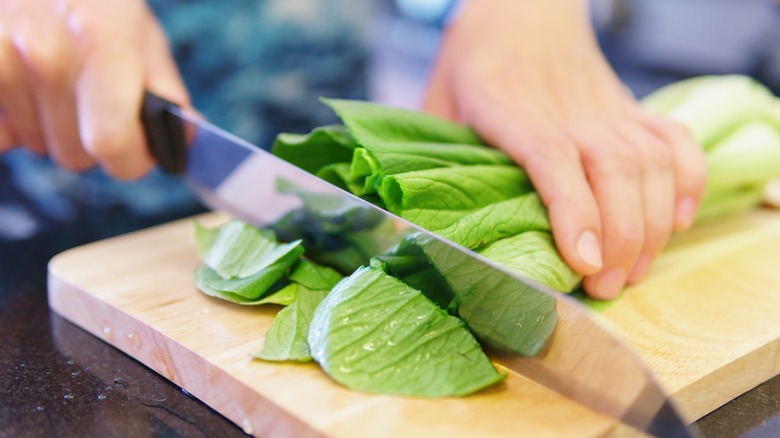How To Clean Bok Choy For Better Stir-Fry
Native to China, bok choy is a versatile and delicious vegetable. When considering using it in your cooking — such as in a stir-fried greens with fermented black beans recipe — it's crucial to clean it properly. Bok choy, akin to its cabbage cousins, has layers of leaves that often hide sneaky pockets of sand and dirt.
To clean your bok choy, start by removing its base, which is typically the dirtiest part of the vegetable, and hinders access to its leaves. Once the base is removed, separate the leaves and stalks for thorough cleaning.
At this point, you have two main options: rinsing or soaking. Rinsing the bok choy helps wash away sediment, and it's advised to rinse three times to ensure maximum cleanliness. Soaking, on the other hand, allows water to permeate the leaves and stalks, loosening sediment. Even with soaking, multiple rounds are recommended to thoroughly cleanse the bok choy's many layers.
Other considerations for preparing bok choy
Like most fruits and vegetables, it's best not to wash bok choy before storing it in the refrigerator, as extra moisture often accelerates wilting and decay. Instead, wash your bok choy only just before cooking with it.
When it's time to clean the bok choy, make sure to use cold water to maintain the freshness and crispness of the leaves. Hot water can cause the leaves to wilt and soften, potentially compromising the crunchy texture desired in stir-fry recipes. After cleaning, consider using a salad spinner or patting the leaves dry to remove excess moisture.
Once the bok choy is dry, it's ready to be incorporated into your chosen stir-fry. Depending on your preference, you can use whole bok choy stalks, cut the stalks in half, chop the bok choy into bite-sized pieces, or even use just the leaves, discarding the stems. For instance, in this wok-seared miso sea bass recipe, bok choy leaves are stir-fried with chile and shiitake slices.


